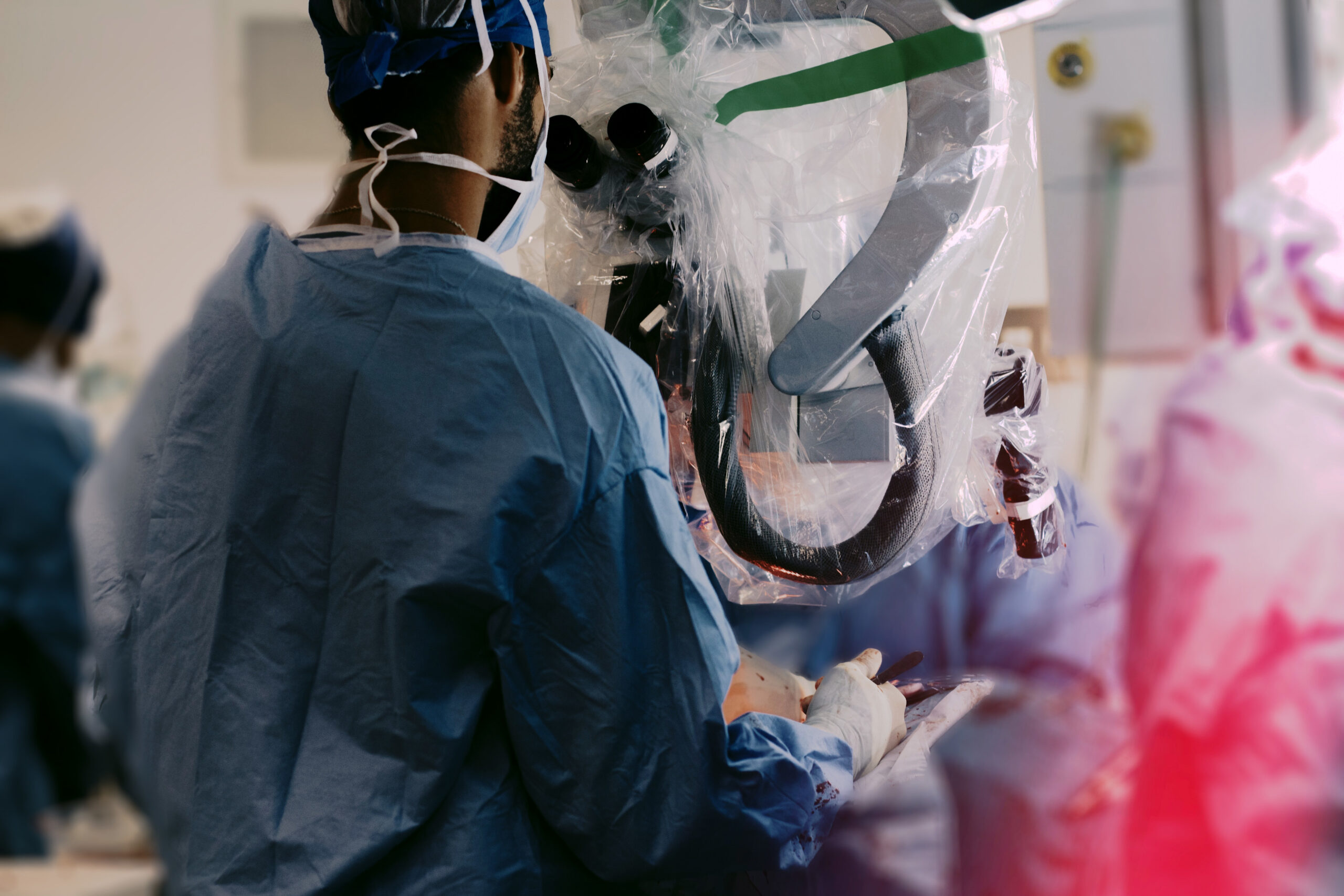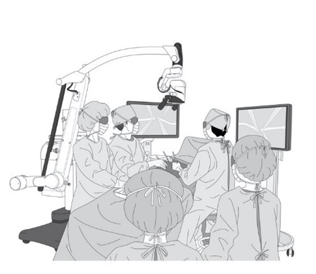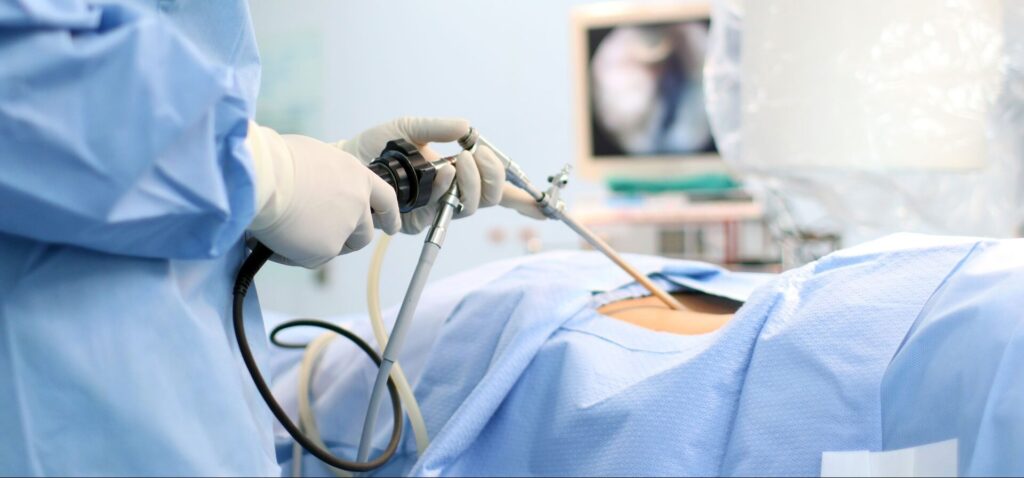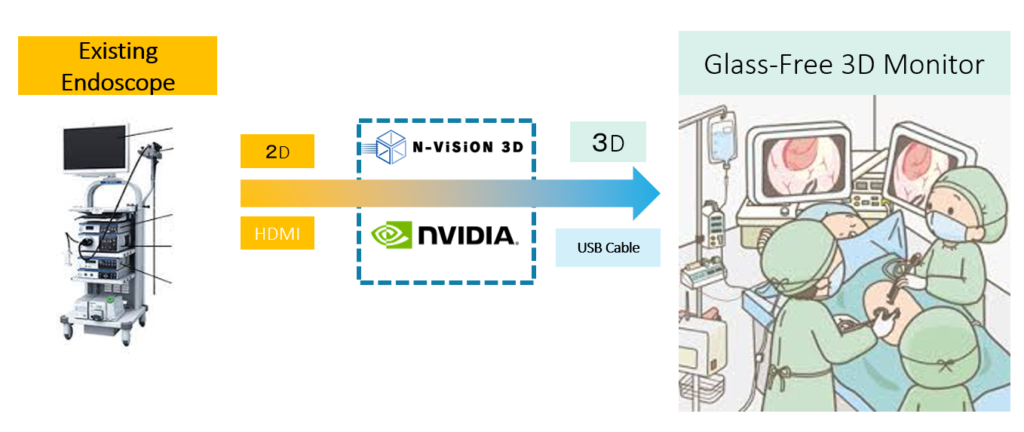N-Vision 3D For microscopic and endoscopic
Problems in microscopic and endoscopic surgery-1
Surgery without a sense of depth and three-dimensionality is very dangerous.

At present, surgeons use a surgical loupe to look into the surgical parts for fine details, and a microscope for more detailed operations.
The former causes numbness in the neck and arms,
In the latter, it causes eye strain and stiff shoulders.
Optical microscopes have a problem of shallow depth of focus at high magnification, making it difficult to focus.
With our system, surgeons, assistants, residents, and medical students can share the same field of view on the same monitor
This system allows surgeons, assistants, residents, and medical students to share the same field of view, and enables the smooth transfer of skills among skilled surgeons.
Our originally developed AI algorithm can create 3D images from 2D images in real time, which can be displayed on glassless 3D display.
Problems in Microscopic and Endoscopic Surgery-2
Multi Camera Endoscope
SOLUTION
Free-glass 3D technology with AI real-time 2D-3D image conversion

This is a glass-free 3D technology based on AI real-time 2D-3D image conversion that can instantly convert any live-action image from a monocular camera into 3Dimage. This real-time 2D-3D conversion enables 3D understanding of the human body and allows the user to see the depth of the some areas of human body, which until now has been invisible on the screen in real time. The ability to see and understand depth in millimeters is effective in preventing massive blood loss and medical errors in advance of surgery.
Real-time 2D to 3D output is in reality
NOVIUS Real-time conversion time (2D to 3D conversion time) is the fastest in the world. The conversion time is approximately 0.08 seconds (as of July 10, 2022) by developing a proprietary AI 3D algorithm. (Measurement environment: 24-inch lenticular display and 17-inch LFD is likely faster)
N-VISION is Non-Medical Device (Programmed Medical Device)
This technology has been confirmed by the Ministry of Health, Labor and Welfare as a programmed medical device and a non-medical device. It is intended for use in the medical field as an AI image support system, or in the case of this technology, for data display, storage, and transfer processing.
Simultaneous viewing by multiple audiences
Glass-Free style, No VR goggles, No converters are needed, so people around you can share what is being displayed on the glass-free 3D display.

1
3D images can be created from 2D images using AI algorithms developed in real-time.
2
3D images enable us to grasp depth and three-dimensional sensation, which leads to improved safety and skills during operation.
3
In medical education, active learning is promoted and the learning curve is shortened for contents (anatomy, etc.) that originally require 3D understanding
4
Glassless 3D output makes it possible to share images with glassless eye and multiple people without wearing a device.
5
Supports post-Covid19 as a non-contact tool
Existing 2D monocular endoscope cameras can be used

Easy connection to existing microscopes, 2D-endoscopes, and X-ray fluoroscope.
Pull images from existing endoscope equipment (such as existing endoscope equipment) via HDMI, etc., and install N-VISION’s AI software on the NVIDIA GPU-equipped equipment. Existing images can be streamed to the device to view 3D-enhanced images in real time. The display is a naked-eye 3D monitor. The connection method is basically HDMI, but depending on the manufacturer of the endoscope system, it may not be possible to output images.

